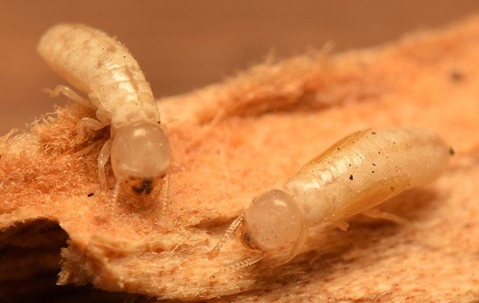Drywood termites are known for causing extreme structural damage to homes throughout the Bay Area. They feed on the wood within your walls, and if left undetected, a drywood termite problem can result in serious home renovations. Read on to learn more about this termite species as well as the telltale signs you might have an infestation.
Oh No! Signs You May Have Drywood Termites In The Bay Area
There are several ways to tell if you have drywood termites on your property. Knowing the signs allows you to schedule professional pest control services before the problem escalates. Here are some signs you may be dealing with a termite infestation:
Clicking, banging, or rustling sounds coming from within your walls
Shed termite body parts throughout your home, especially wings
Flying termite swarmers
Wood that sounds hollow when tapping or knocking on it
Windows or doors that become stuck when attempting to open
Creaky hardwood floors
Noticing termite droppings
Proper termite identification is key in fighting an infestation. Many homeowners mistake termites for ants because of their similar appearance. One of the main differences is how their bodies are structured. Ants have a segmented torso while termites do not. Ants are also typically black or dark brown, while termites are more off-white or tan. At the first signs of termites in your home, contact a trusted source of pest control in the Bay Area, like Bay Pest.
How To Identify Drywood Termite Droppings
Drywood termite droppings, also known as "frass," look very similar to other things you may find around your property. Termites leave little piles of their droppings that look like sawdust close to their colonies. Many people mistake termite droppings for coffee grounds or salt and pepper. Upon a closer inspection, it's possible to tell the difference.
Termite droppings are smooth and round like a grain of rice, while coffee grounds and spices have more jagged edges. These droppings do not have a noticeable smell, and their color will reflect whichever color wood they are feeding on at the time. Termite colonies will have several "kick-out holes" where they can easily expel droppings. If you suspect you've discovered a pile of termite frass, look for a hole in the surrounding wall or floor. Chances are you'll find one. When finding a pile of termite droppings, try to leave it intact until an exterminator can confirm that you do indeed have an infestation.
The Difference Between Drywood And Dampwood Termites
Before scheduling a drywood termite treatment, confirm that you have drywood termites and not dampwood termites. One of the most obvious differences between these two termite species is the wood they prefer to feed on. Drywood termites tend to invade homes and set up colonies within walls where there is plenty of dry wood. Dampwood termites prefer moist areas and wet, decaying wood. They are also more likely to build their habitats outdoors. Dampwood termites are much larger than their drywood counterparts, measuring over an inch in length compared to about a half of an inch. Lastly, the droppings of the two species are different in appearance. You'll likely find piles of drywood termite frass outside of where they are currently active. Dampwood termite droppings usually stick to the surface of their colonies or food sources.
Total Termite Control For Homes In The Bay Area
To get rid of termites in the Bay Area, call in the experts at Bay Pest. We've been keeping homes free of all types of termites for over 40 years. Our extensive treatment solutions will ensure we eradicate all termites from your property and that they never return. We back all of our treatments with a warranty for guaranteed satisfaction. To learn more about how we can help, give us a call today.

